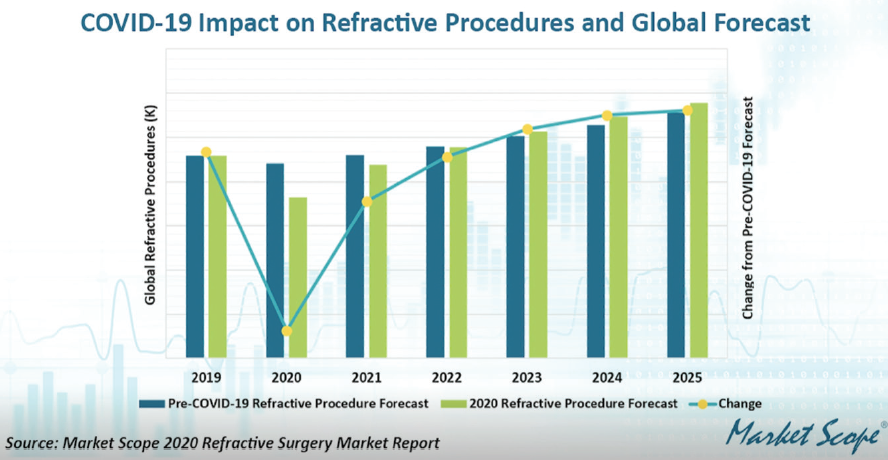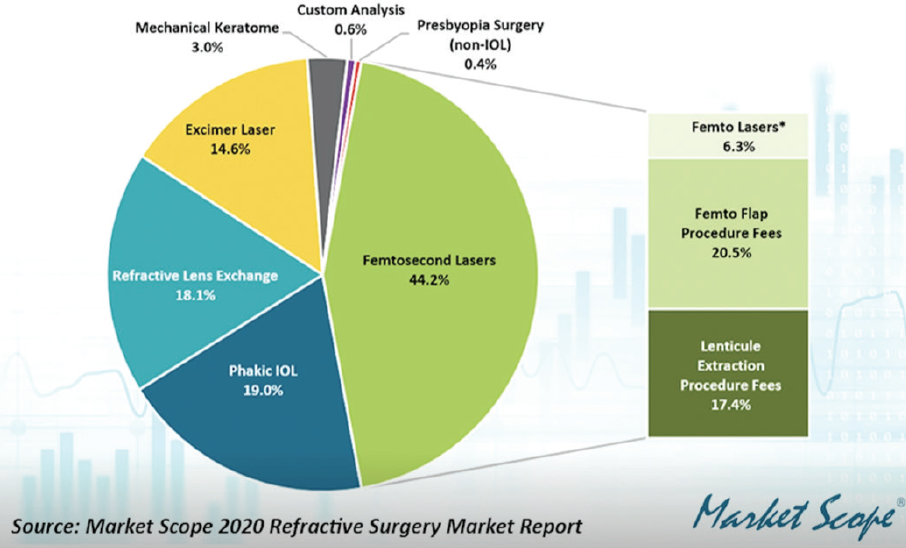

Your practice made it through 2020! Congratulations. You have managed to steer yourself and your practice through one of the most trying times in history. Keep your seat belt on, though, because the ride’s not over yet. Europe is slipping into a double-dip recession. Tough restrictions are taking their toll. However, the prospect of fast vaccine rollout has investors betting that, if we can reduce COVID-19 early this year, the economy will recover faster.
So, where are we now? Many practices experienced significant volume increases this year, yet the overall case volume fell. Prospective patients, with more time and in some cases more money on their hands, sought ways to improve their lives. The proactive clinics that retained a share of voice managed to reap significant rewards. What worries many, however, is the financial reckoning we’re about to face. Unemployment rates have surged. Businesses are on the brink. What will 2021 bring?
Recessions are not solely bad news. There are many opportunities available to businesses that are prepared to seek them out. We want to share five useful tips to help you start the year right.
Start Strong
Most of the refractive surgery clinics we advise grew in awareness and conversions in 2020 compared with 2021. Most had their best month in January 2021; they’re feeling optimistic, energetic, and ready to smash 2021. If you can’t relate, take solace in the fact that COVID-19 has likely leveled the playing field for many private practices. The only way from here is up.
According to Market Scope’s 2020 Refractive Surgery Market Report, COVID-19 had a significant negative impact on refractive procedures in 2020 (Figure 1).1 Compared with its pre–COVID-19 forecast, Market Scope reported a drop of 17.3%.

Figure 1. COVID-19 had a significant negative impact on refractive procedures in 2020.
The economy might not be exactly where we’d like it to be, but that doesn’t mean you should wait to ramp up your business model. Doing so may put you at the mercy of your better-prepared competitors. Get out in front of your competition, be as flexible as possible, and look for opportunities in your market as it shifts. Adjust your strategies and tactics depending on how your patients react to navigating the changing government messaging and restrictions.
Recessions affect different groups of people differently. Many consumers with more money and more time have noticed that glasses and contact lenses don’t mix well with face masks, facial hygiene, and dry eye. Because most individuals are not engaging with the travel and entertainment industries, many have more time and money to spend on themselves. These patients will drive the compound annual rate of 9.6% bounce-back that Market Scope projects through 2025. You must do what you can to stay competitive as the growth begins.
Spend wisely
If you had only a few thousand euros a month to spend on marketing, our advice is to make sure that you were spending it in places that would most fuel your growth.
Update your website. 2021 will be the year that Google prioritizes speed over everything else. Visitors want fast—and informative—web content that they can read while on their mobile devices. Optimizing for mobile is no longer an option; it’s the priority. Therefore, spend at least €1,000 per month optimizing your website for conversion and speed.
Produce and share video content. On the web and social media, visitors are significantly more likely to gain interest after watching video content. We suggest producing fast-answer video content that responds to what prospective patients most want to know. Take time to figure out what that is, but don’t worry too much about high production value; videos shot on mobile phones can still have excellent return on investment. Consider earmarking about €500 a month to plan, shoot, blog, and share these videos.
Optimize your existing content. Search engine optimization had a lynchpin effect on our customers’ fortunes during 2020. Optimizing for longtail searches (eg, “how much does LASIK cost in my area”) is associated with even better conversion rates than head term searches such as “LASIK.” Don’t stop at producing 15 to 30 pages on your website alone. Plan your topics and blog at least once a month. Depending on the volume, consider spending around €1,500 to €2,000 on search engine optimization every month.
Offer a lead magnet. Some practices report remarkable success with their self-tests. The benefit of offering a self-test engages is that it enables you to get visitors’ contact details and follow up with them. Some of our customers report that 20% of their appointments stem from email follow-up after self-tests. Consider spending a couple thousand euros designing an effective self-test and writing an email follow-up campaign.
Offer online bookings. If you haven’t yet set up online booking, you’re missing a significant opportunity to book appointments directly from your website. This can ease the pressure on overburdened phone staff. Many of our customers generate most of their appointment bookings online without even speaking to the inquiring parties before they book. Furthermore, the implementation cost of online booking is minimal.
Focus Sales On Revenue-Driving Procedures
Companies that emerge from recessions on top focus on investing in their best prospects during the recession. Consumers begin to reconsider luxuries (such as elective procedures) after a recession’s midpoint. According to Market Scope, most revenues will be from femtosecond laser procedures, followed by phakic IOL implantation, refractive lens exchange, and, finally, laser vision correction (Figure 2).1 Thus, it makes sense to expand your solution portfolio to leverage as many opportunities possible.

Figure 2. Global refractive surgery revenue by product category.
Figures courtesy of Market Scope1
Increase Your Marketing Spend
Many firms will see their advertising expenses as nonessential and place them on hold. This is an opportunity for investment and optimization. This is your chance to cut through the noise and make your practice heard while others remain quiet.
Paid traffic campaigns had excellent returns on investment in 2020, and that is expected to grow in 2021. There is a strong positive correlation between those who increase their spending and those who see their volume of inquiries increase. Ensure that you evaluate the efficacy of your marketing spend on how much money it generates instead of how much money it costs.
Remain sensitive to the challenges that your patients are likely still experiencing. Your advertising must be understanding and supportive. It should show how you intend to make the situation for them better. When we asked Casey Palm, a paid traffic specialist, about what he observed worked best in paid traffic in 2020, he said, “Without a doubt, it would have to be the addition of practices offering virtual consultations and specifically promoting them via paid search and paid social. For practices that made the pivot early on to begin offering virtual consults, results were strong and continue to hold in areas still heavily restricted by the pandemic.
“Virtual consults provide a more comfortable and convenient experience for both the practice and potential customer, so it was a real win-win. In my opinion, virtual consultations were a call-to-action happy medium between something too aggressive such as in-person consults and something high in the funnel such as a candidacy test. Although the pandemic will someday be behind us, I think virtual consults are here to stay.”
Offer Virtual Consultations
Simplify and personalize your services by bringing patients online whenever possible. This pandemic has proven that physical examinations aren’t always necessary. Consider conducting pre- and postoperative appointments online via video consultations or over the phone.
On virtual consultations, US LASIK marketing consultant Michael King said, “Hands down, the number one most effective pivot that successful clinics adopted in 2020 was virtual consultations. It has helped to notably increase their lead-to-consultation conversion rate and better qualify patients before they even enter their office. Not to mention, patients love them, and it enables them to learn about this life-changing procedure in the comfort and convenience of their homes.”
Digital communication, such as email marketing or text messaging, should provide essential communications, help patients deal with changed circumstances, and give them the confidence to spend their growing savings on something that will improve every day of the rest of their lives.
1. 2020 Refractive surgery market report: A global analysis for 2019 to 2025, December, 2020. Market Scope. December 2020. https://www.market-scope.com/pages/reports/232/2020-refractive-surgery-market-report


